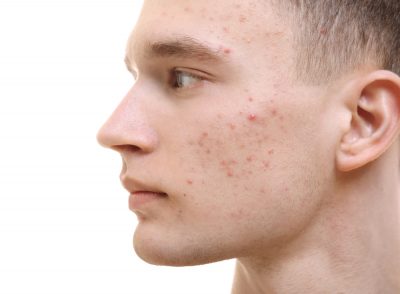Testosterone is the dominant sex hormone in men known as androgen. Testosterone is found in a higher quantity in men than in female; however, the testosterone is converted to estrogen in women. Testosterone is produced in the testes in men and the ovaries in women.
The testosterone hormone is responsible for the development of the secondary sex attributes found in men such as hair on the chest, healthy libido, and maintenance of energy levels, the building of muscle mass, and a deeper voice.
The problem of having high testosterone levels are most times, not found in elderly and middle-aged men because they do not receive enough testosterone at this point in their lives. If there are issues whereby the testosterone levels are not balanced, it is usually a case of lowered testosterone levels rather than a heightened testosterone level.
Testosterone performs numerous functions. In men it performs tasks like the development of sex organs during puberty, production of sperm, and development of male physical characteristics, strengthening of bones, firm erection spontaneously, increase in muscle mass and high interest for sex.
In females, testosterone performs functions like production of new blood cells, fertility, high interest in sex, and maintenance of the levels of other hormones.
Low Testosterone Levels
Lowered testosterone levels in women can cause infertility and complication during pregnancy. It can negatively affect the growth of a male fetus. It also affects the puberty period in men and can slow down your development or growth. Changes in testosterone vary in men and women, with a dramatic fall in women till menopause and a fairly fall in men.
Out of balance, testosterone in men and women are most likely to be the case of lowered testosterone level. This is because the peak of testosterone produced in men occurs at the age of twenty, and from that point onwards, the level of testosterone begins to wane and decrease.
While some start to see the changes in their body because of the reduction in testosterone levels, it might take longer for other men to notice it. This reduction in testosterone is referred to as andropause, male menopause or hypogonadism. It is essential to know that the decrease of testosterone in male and female occurs naturally as they start to age.
In men, a reduction of testosterone in their system could eventually lead to:
 Hair loss on the face and body
Hair loss on the face and body- Fragile bones that are susceptible to fractures
- Lowered muscle tone
- Lack of interest in sex
- Reduced libido
- Disturbed or aggressive mood
- Lack of sleep or insomnia
- Concentration or memory issues
- Loss of physical energy
- A decline in strength and stamina
In women, lowered testosterone levels can result in:
- Acne
- Infertility
- Male pattern baldness
- Fragile bones susceptible to fractures
- Dry vagina
- Lack of interest in sex
- Reduced libido
- Missed or irregular menstruations
Symptoms of Lowered Testosterone Levels
Problems with erection
With lowered testosterone levels, it becomes difficult for you to have or even maintain an erection. Testosterone is closely related to construction because it stimulates the tissues found in the penis known as the penile tissues, to create or produce nitric oxide, which eventually leads to an erection.
If the level of testosterone is your body is too low, achieving an erection is near to impossible. There are other factors which can lead to erectile dysfunction, and they include smoking, high cholesterol in your system, anxiety or stress, alcohol consumption, diabetes, high blood pressure and thyroid-related issues.
Loss of hair
Lowered testosterone levels can result in hair loss for both men and women. Most men start to experience loss of hair when they get older. It is a natural phenomenon for men and women to lose some hair as they grow with time.
Reduction in bone and muscle mass
Testosterone aids in the production of muscle and bone tissues. With a lowered testosterone, bones tend to start growing weak and become more susceptible to fractures. The muscle mass is also affected as it cannot be well built without enough testosterone.
Exercise is of little or no help when making your muscle mass if you do not have enough testosterone in your body. Research has, however, shown that the strength of the muscles is not reduced as the muscle mass decreases.
Reduction in testicle size
With a lowered testosterone size, the size of your testicles begins to decrease gradually, and this is not associated with the cold temperature. You would also notice that your scrotum becomes softer; this is a sign of a low testosterone level in your body.
Reduced semen produced
Semen is known as the fluid that most men ejaculate; it helps in directing the sperm to locate the egg. Testosterone plays a vital role in the production of semen in men. With a lowered testosterone level, men would experience that they no longer produce sperm like before. This is would gradually lead to infertility.
Difficulty in sleeping
Most times, men with low testosterone levels find it very difficult to have a good night rest. Most men suffer from sleep apnea which causes them to have difficulty in sleep, which would, in turn, disturb their sleep.
 Lowered sex drive
Lowered sex drive
With the reduction in testosterone comes a reduced sex drive. Men begin to lose interest in sex as they get older, and this is a result of low testosterone hormones.
An increase in body fat
Research has shown that most men who have lowered testosterone levels tend to become obese. This is because of testosterone aids in stripping men and women of their excess fat. So with a low testosterone level, they add more weight and become obese.
Changes in mood
Studies have shown that men with low testosterone levels experience lack of focus, depression and anxiety.
A decrease in energy levels
A drop in testosterone levels lead to fatigue and loss of energy. A person can still suffer from tiredness or fatigue even after having enough sleep and rest.
Hot flashes
Lowered testosterone can make women experience hot flashes. Hot flashes are closely connected with estrogen levels that are not consistent during menopause.
Regular or Average Testosterone Level
Research has shown that the average level of testosterone in men is about 270-1070 ng/dL, with an average of 679 ng/dL. At the age of twenty, the testosterone level in male is at its peak but gradually starts to decline from then.
Any level of testosterone that is below or above the average level of testosterone is known to be out of balance. Studies have shown that the healthiest men have testosterone levels ranging from 400-600 ng/dL.
High Testosterone Level
Issues of high testosterone levels are scarce in men. In children, it leads to early experiencing puberty or a growth spurt. In some cases, high testosterone levels can lead to infertility.
In women, high testosterone levels can lead to polycystic ovary syndrome (PCOS); this is an issue that happens when the ovaries produce excess testosterone. The symptoms include:
- Acne
- Oily skin
- Missed or irregular periods
- Increased growth of hair on the face, chest or back.
Studies have shown that the combination of environment and genes causes PCOS.
Advantages of High Testosterone Levels in Men
There are some benefits of having high testosterone levels in men. They include:
- Normalization of blood pressure
- A reduction in the excess gaining of weight or obesity and heart attacks.
Disadvantages of High Testosterone Levels in Men
As there are benefits of high testosterone levels in men, there are also disadvantages of high testosterone levels in men. They include:
- Men are likely to consume alcohol.
- They tend to smoke more
- They are more likely to get injured
- Studies have shown that men with high testosterone level, men are likely to engage in high-risk taking activities like criminal acts, injury and sexual risk.
How Often Should a Man Have His Testosterone Levels Checked?
Studies suggest that monitoring your testosterone every five years is a superb way of ensuring that your testosterone level is in balance. This research should start after the age of thirty-five.
If the individual is suffering from a lowered testosterone level, testosterone therapy can be administered. When this therapy is in session, your testosterone level must be diligently monitored to make sure that the testosterone level does not exceed the normal range.
Finding your desired testosterone level is very much achievable, as long as you are willing to have your testosterone levels checked before the therapy and frequently checked even after the treatment has been conducted.
Conclusion
Testosterone is the dominant sex hormone responsible for the development of the physical characteristics of men. It aids in the event of sex organs. It also increases the sex drive, libido, muscle mass, bone volume and strength in men.
A man is at the peak of producing testosterone at the age of twenty, and from that point, it starts to wane. Any testosterone produced above or below the normal range of testosterone stipulated is regarded as out of balance.
Once your testosterone level is lower than usual, you can boost it by exercising and living a healthy lifestyle, avoid taking alcohol and smoking or even taking tested, trusted and certified testosterone boosters.








COMMENTS